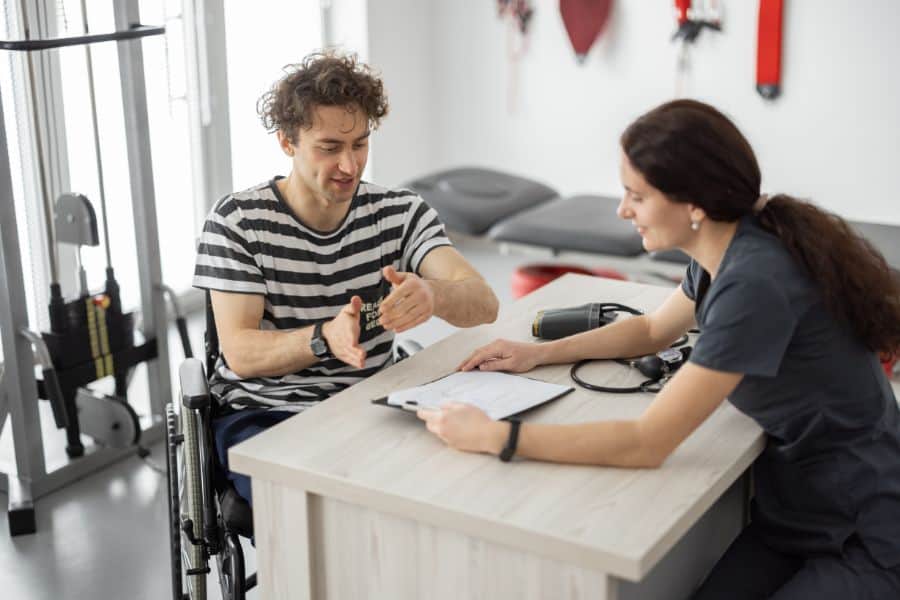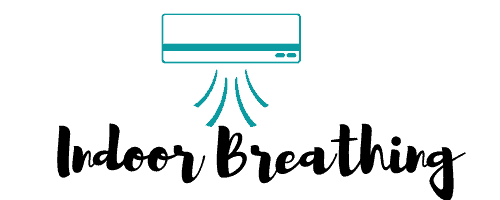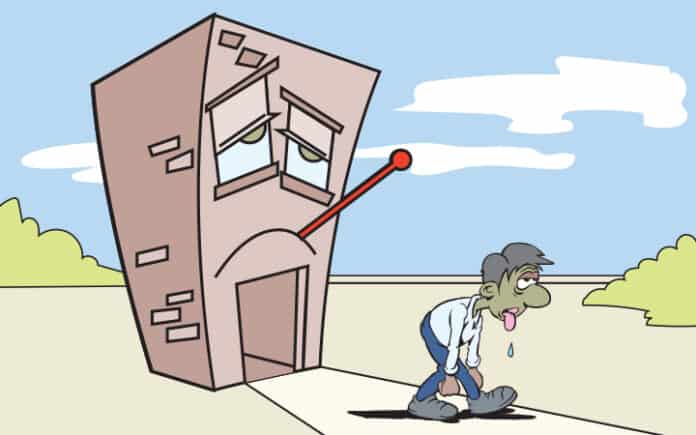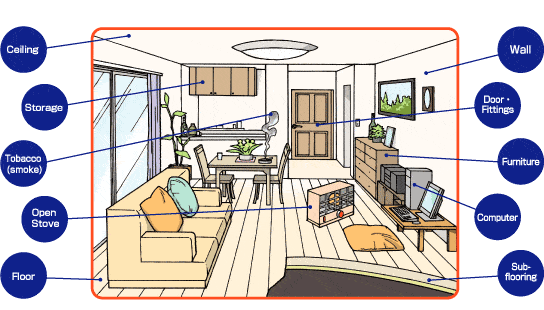A sick building syndrome (SBS) is nothing but a particular medical condition if someone realizes any specific symptoms of feeling unwell or illness for no apparent reason.
These symptoms might increase in severity level with the time they spend in the building and develop over time or disappear when they are out of the building.
Table of Contents
Identifying SBS:
The primary identification for this SBS (Sick Building Syndrome) is an increased discomfort in the various body parts such as eye, headache, throat irritation, nose, dizziness, fatigue, and nausea.
The severity of these symptoms is linked to the amount of time you spent in the building, even though no particular cause or illness can be identified.
Causes Of Sick Building Syndrome:
The major causes of the sick building syndrome will be,
- Flaws in the HVAC (Heating, Ventilation, and Air Conditioning) systems.
- Harmful contaminants are produced by outgassing any of the building materials.
- Development of molds in the various parts of the building.
- Volatile Organic Compounds (VOC).
- Light industrial chemicals were used.
- Improper exhaust ventilation of ozone.
- Lack of enough fresh air intake or air filtration.
Symptoms:
Humans who are all exposed to sick building syndrome can get a variety of undesirable health effects. They include,
- Sensory irritation of the nose, throat, or eyes
- Skin irritation
- General or neuro-toxic health issues
- Some infectious disease
- Non-specific hypersensitivity reactions
- Odor & taste sensations
Important Facts
Sick building syndrome (SBS) has no specific cause in general. Still, some known causes of this illness will be formaldehyde fumes, lead poisoning, and many other substances in the individual buildings.
At the same time, there is no diagnostic test for this syndrome and no particular treatment. This syndrome’s complications could range from the symptoms’ severity to an inability to tolerate staying inside that building.
| Buy Now |  | Innmily | PrimeEligible | |
| Buy Now |  | Vitscan | PrimeEligible | |
| Buy Now |  | Aiheal | PrimeEligible | |
| Buy Now |  | Delfori | PrimeEligible | |
| Buy Now |  | Vergali | PrimeEligible |
Causes of Sick Building Syndrome
- Poor Indoor Air Quality (IAQ)
- Chemical Contaminants: Volatile Organic Compounds (VOCs) from paints, carpets, office equipment, cleaning products, and building materials can cause significant health issues.
- Biological Contaminants: Mold, bacteria, pollen, and viruses that thrive in damp, poorly ventilated areas can trigger respiratory problems and allergic reactions.
- Particulate Matter: Dust, smoke, and other fine particles can contribute to respiratory irritation and other health issues.
- Inadequate Ventilation
- Insufficient fresh air can lead to the buildup of indoor pollutants. Buildings with sealed windows, poor HVAC maintenance, and inadequate ventilation systems are particularly susceptible.
- Electromagnetic Radiation
- Prolonged exposure to electromagnetic fields from computers, Wi-Fi, and other electronic devices can contribute to symptoms such as headaches and fatigue.
- Psychological Factors
- Stress, poor lighting, uncomfortable temperatures, and noise pollution can also exacerbate the symptoms of SBS.
Prevention of Sick Building Syndrome
- Improve Ventilation
- Ensure that the building has a properly functioning HVAC system that meets the recommended air exchange rates. Regular maintenance and cleaning of HVAC systems are crucial.
- Open windows where possible to allow natural ventilation.
- Control Chemical and Biological Contaminants
- Use low-VOC or no-VOC paints, adhesives, and cleaning products.
- Regularly clean and maintain office equipment to reduce dust and chemical emissions.
- Address water leaks and dampness promptly to prevent mold growth.
- Enhance Indoor Air Quality
- Use air purifiers with HEPA filters to reduce particulate matter and allergens.
- Introduce indoor plants that can help filter the air, such as spider plants, snake plants, and peace lilies.
- Monitor and Maintain Building Systems
- Regular inspections and maintenance of building systems, including plumbing, electrical, and HVAC, can prevent issues that contribute to SBS.
- Implement a comprehensive building management plan that includes regular cleaning and maintenance schedules.
- Create a Comfortable Environment
- Ensure adequate lighting, preferably natural light, to reduce eye strain and improve mood.
- Maintain a comfortable temperature and humidity level within the building.
- Provide ergonomic furniture to reduce physical strain.
Treatment for Sick Building Syndrome
- Identify and Remove the Source
- Conduct thorough investigations to identify the sources of pollutants or issues contributing to SBS. This may involve air quality testing, building inspections, and reviewing maintenance records.
- Once identified, take immediate steps to remove or mitigate these sources.
- Medical Treatment
- Addressing the health symptoms of SBS may require medical treatment. This can include medications for allergies, asthma, or other respiratory issues.
- Encourage affected individuals to consult healthcare professionals for a proper diagnosis and treatment plan.
- Relocate if Necessary
- In severe cases, it may be necessary for individuals to relocate temporarily or permanently from the affected building until the issues are resolved.
- Employee and Occupant Education
- Educate occupants about SBS, its symptoms, and the importance of reporting health concerns.
- Encourage practices that reduce exposure to potential pollutants, such as proper ventilation and cleanliness.
How To Prevent Sick Building Syndrome?

Preventing sick building syndrome (SBS) is challenging to diagnose because of the unknown cause, no defined treatments, and no diagnostic tests.
Some healthcare treatment centers have given simple prevention methods for this syndrome to diagnose the construction materials and air-moving systems used in the building.
Whenever you look for the considerable signs of sick building syndrome, nosebleeds are the most common ones. The nasal bleeding spontaneously occurs when the nose’s membranes dry out, crack, or crust, especially in dry climates or during the winter season.
When the surrounding air is dry and warm from your household heaters, you will experience this sign frequently. However, you don’t need to take other blood clotting medications for this condition because it might be risky.
Some other incline factors include trauma, infection, non-allergic and allergic rhinitis, alcohol abuse, hypertension, and inherited bleeding problems.
Why Is SBS Controversial?
Nowadays, SBS, which is sick building syndrome, is highly controversial. Even though many individuals and clinicians hope this kind of syndrome is related to the building’s internal environment, particularly the indoor air quality, most other clinicians and medical industries don’t believe in this kind of medical syndrome.
This is why controversy exists in the cause and condition of this sick building syndrome for various reasons. However, another main reason for this SBS’s controversial opinions is that there are no defined causes, symptoms, or treatments for this syndrome.
Types Of Medical Specialists

When the employees working in a building or ordinary people living in a house suffer from illness due to the structure, you should have to find the right type of medical specialist who can treat this condition.
| Buy Now |  | Delfori | PrimeEligible | |
| Buy Now |  | MOSO NATURAL | PrimeEligible | |
| Buy Now |  | CLEVAST | PrimeEligible | |
| Buy Now |  | KNRV Commerce | PrimeEligible | |
| Buy Now |  | Apraii | PrimeEligible |
You can go to the primary health care physician or a pediatrician to treat all your sick building syndrome symptoms due to the buildings’ air quality and other substances. Some other medical specialists are also involved in the treatment of this syndrome, including,
- Allergists
- Specialized building inspectors
- Immunologists, etc.
They can quickly determine the cause of health issues and suggest the best ways to solve them.
Other Conditions Of SBS:
The causes mentioned above explain why eloping the sick building syndrome in males and females, but some other conditions are developing in them.
They include some medical conditions like COPD, asthma, etc. Whenever any of your colleagues or family members are affected by these diseases, it will also affect you slightly or severely.
Some other building compounds include radon, formaldehyde, paint odor, cigarette smoke, or biologics such as black mold, fungi, or indoor house plants.
Preventative Measures:
The following are some of the suggested but beneficial preventative measures for sick building syndrome in humans. They include,
- Using ozone removes many sources like molds, VOC, viruses, mildews, bacteria, and even odors.
- Complete roof cleaning without pressure to remove mold, algae, and Galoecapsa magma.
- Use of the adhesives, paints, pesticides, and solvents in the well ventilated
- Replacement of the water-stained carpeting, ceiling and
- Use of pollutant sources during the nonworking periods in the company.
- Frequent and proper maintenance of the HVAC systems.
- Increasing the number of air exchanges and many medical care specialists recommend a minimum of 8.4 air exchanges within 24 hours.
- UVC light in the available HVAC plenum.
- Regular vacuuming the floor using the vacuum cleaner with the HEPA filter is essential.
- It increased ventilation rates.
When these preventative measures are followed, the employees in a company or the home are unaffected by this sick building syndrome.






